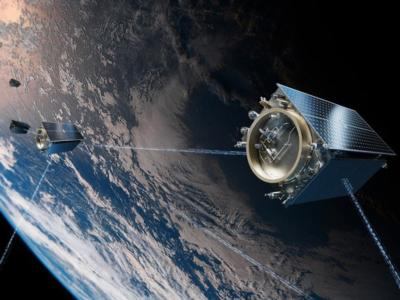Sun, May 04, 2025
Lockheed Martin is Happy to Stick By Their Partners for Future Launches, Too
A Firefly Alpha rocket bearing a Lockheed Martin demo satellite failed to reach orbit earlier this week, after a previous scrub by ground equipment.

The FLTA0006 mission was going just fine and dandy for about two and a half minutes, when a cloud appeared between the stages, followed by a puff of debris as the upper stage continued upwards. While everything remains to be hashed out in the usual investigative process, the failure struck many in the space hobby-sphere as unusual. The trail of vapor didn’t immediately appear to cause a real mission-ending issue, as the upper stage separated and fired for a full six-minute burn. The upper stage then made its way to orbit, according to Firefly, where it would normally have begun deploying its payload. Onlookers ended up losing the feed shortly after that, when the company cut the livestream.
Firefly followed up on the issue shortly after, announcing the launch “experienced a mishap between stage separation and second stage ignition that led to the loss of the Lightning engine nozzle extension, substantially reducing the engine’s thrust.” That allowed it to get up to almost 200 statute miles in altitude, while failing to attain orbital velocity. The end result was the first stage and its payload falling back down to Earth to splash down in a “cleared zone north of Antarctica.” The current thesis assumes that the engine nozzle extension for the first stage was damaged in the incident, leading to a much lower power output than assumed for a nominally functional system.
Its payload was an LM 400 Tech Demo Satellite from Lockheed Martin, and an early example of the type. The LM 400 is intended to be a modular, mid-size, multi-mission satellite bus that can be pressed into service across a whole swath of military, commercial, and civil tasks from remote sensing, communications, imaging, survey, or whatever else clients desire. Lockheed doesn’t seem too brokenhearted at the mission failure, saying they’d continue onwards with Firefly for future work. Lockheed spokesman Chip Eschenfelder said “Navigating risk and going fast are part of these self-funded demonstrations, and the knowledge we’ve gained already from the LM 400 production and processing will also benefit future customer missions.”
More News
From 2023 (YouTube edition): The Resurgent Gyroplane Existing at the confluence of the airplane, the helicopter, and the pinwheel, the machine known alternately as the autogiro and>[...]
How To Get A Story On Aero-TV News/Feature Programming How do I submit a story idea or lead to Aero-TV? If you would like to submit a story idea or lead, please contact Jim Campbel>[...]
Aero Linx: Brodhead Pietenpol Association The Brodhead Pietenpol Association is a newly reorganized (in 2017) non-profit educational corporation that grew and developed from an ear>[...]
Receiver Autonomous Integrity Monitoring (RAIM) A technique whereby a civil GNSS receiver/processor determines the integrity of the GNSS navigation signals without reference to sen>[...]
...Attempted To Reach The Runway But Landed About 15 Ft Short And Impacted A Berm On July 23, 2025, about 1300 eastern daylight time, N112EF, a Rockwell International 112 airplane,>[...]
 Classic Aero-TV: Brazilian Hummingbird Alights in U.S.
Classic Aero-TV: Brazilian Hummingbird Alights in U.S. ANN FAQ: Contributing To Aero-TV
ANN FAQ: Contributing To Aero-TV ANN's Daily Aero-Linx (09.01.25)
ANN's Daily Aero-Linx (09.01.25) ANN's Daily Aero-Term (09.01.25): Receiver Autonomous Integrity Monitoring
ANN's Daily Aero-Term (09.01.25): Receiver Autonomous Integrity Monitoring NTSB Prelim: Rockwell International 112
NTSB Prelim: Rockwell International 112



